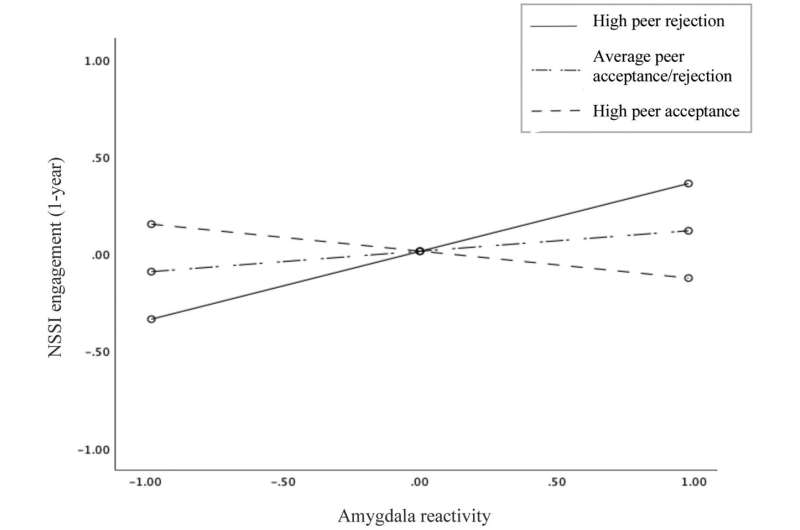
Engaging in self-harming behaviors without the intention to die, or non-suicidal self-injury (NSSI), increases dramatically in the transition from childhood to adolescence and continues to grow throughout the teenage years. Although engagement in NSSI is often associated with emotional reactivity and may occur in response to distressing social experiences, some youth are more likely than others to carry out self-injury. How both emotional and social-environmental vulnerabilities may interact within individuals to increase developmental risk for self-harm remains unknown.
Now, a new longitudinal study in Biological Psychiatry, examines the neural-based correlates and other risk factors for self-injurious behaviors such as NSSI, an understanding of which could help bolster kids’ resilience against NSSI behaviors.
“Adolescent self-harm is a very complicated behavior with many contributing factors. We do not yet have strong objective predictors for self-harm,” said John Krystal, MD, editor of Biological Psychiatry.
NSSI behaviors include cutting or carving skin, inserting objects under nails or skin, burning skin, scraping or picking skin to the point of drawing blood, and hitting oneself on purpose.
For the study, researchers at The University of North Carolina at Chapel Hill led by Olivia H. Pollak, MA, examined adolescents’ reactivity in a brain area called the amygdala, which has been associated with emotional reactivity and sensitivity to the social environment, including reward and punishment.
The 125 participants performed a task in which they anticipated and sought to avoid peer punishment (a scowling face) and anticipated and sought to gain social reward (a smiling face) while undergoing brain imaging. Participants completed a questionnaire the year of the scan and again one year later to determine past NSSI behavior. The teens also classified their peers (from a class roster) as those they liked most and least—an established assessment of social preference, capturing real-world experiences of peer acceptance and rejection.
The researchers found that greater amygdala reactivity during anticipation of social punishment predicted greater NSSI engagement one year later among adolescents with lower peer-nominated social preference. This finding suggests that adolescents who are both more sensitive to the prospect of social punishment and who experience greater social adversity in their real-world peer network may be at heightened risk for future NSSI.
Dr. Krystal said of the findings, “This study points out that a strong brain reaction to social punishment may be a marker, perhaps even a contributor, to maladaptive responses to social stress; in this case self-harm following peer rejection.”
First author Olivia H. Pollak added, “Clinically, our findings suggest that teaching emotion regulation skills and increasing prosocial peer interactions may help protect against engagement in self-injurious behaviors in adolescence.”
More information:
Olivia H. Pollak et al, Neural Reactivity to Social Punishment Predicts Future Engagement in Nonsuicidal Self-injury Among Peer-Rejected Adolescents, Biological Psychiatry (2022). DOI: 10.1016/j.biopsych.2022.09.030
Journal information:
Biological Psychiatry
Source: Read Full Article